10 Mistakes Everyone Makes When Buying Sausage
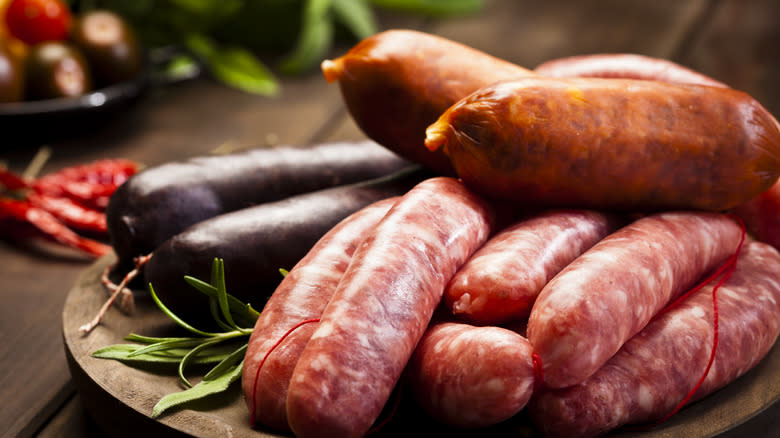
Many people might think that a good sausage dish starts with a pan or a cutting board, but in reality, it starts way before that. It starts at the store, where the type and condition of the sausage you buy can affect everything from the taste of your dish to whether or not it will give you a stomachache.
Buying sausage might seem pretty straightforward: You just find the sausage section, pick something up, and go. But there are many mistakes to be made while sausage shopping, some of which can really turn a great dinner into a big mistake. Maybe the sausage is smoked instead of fresh. Maybe it is older than you anticipated and will go bad soon. Or maybe it has already gone bad and you just paid for something that will make you sick.
Luckily, there are ways to avoid these problems with just a bit of know-how and forethought. Before you head to the grocery or the butcher shop, check out these common sausage-buying mistakes. Your stomach will thank you!
Read more: 13 Canned Foods You Should Avoid At The Grocery Store
Buying Raw Sausage When You Want Cooked (Or Vice Versa)
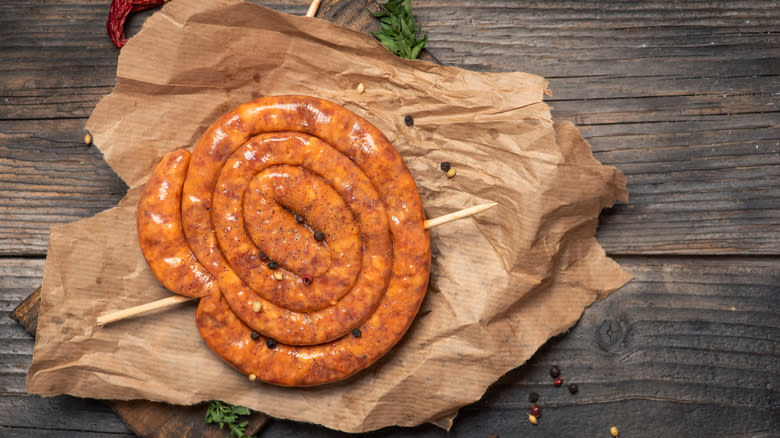
When you go looking for sausages, you might be overwhelmed by the variety that you find. There are so many kinds to choose from! But first things first: Take a look at the recipe you are planning to use or think about what you want to do with the sausage. Do you want to cook it in jambalaya? Or do you want sausage you can eat straight from the package?
The two main types of sausage you will find at the store are fresh sausage and smoked sausage. While the two might look similar in some cases, it is very important that you know the difference between them. For one thing, they must be prepared differently: fresh sausage needs to be cooked, while smoked sausage has already been cooked and can be either eaten as-is or heated up. They also typically have different flavors, with smoked sausages having a spicier, smokier taste due to their preparation process.
The most important difference between the two, however, is their shelf life. Both should be kept in the refrigerator, but fresh sausage should be eaten within one to two days of purchase or within three to four days of cooking. Smoked sausage, on the other hand, stays good in the fridge for two weeks, and should be eaten within a week of cooking.
Not Checking The Sell-By Date
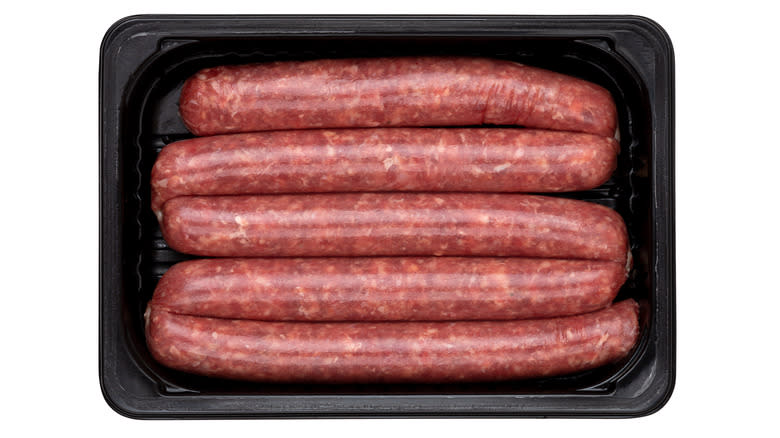
While you're shopping, you may have the tendency to just pick up the things you came for and toss them into the cart without really looking at them. This might save you some time in the moment, but you might end up losing the time you gained when you have to go back and buy another package of sausage because the one you so blithely chucked in the cart was expired.
When choosing sausage, one of the most important things you need to do is check the sell-by date. While this is the date by which the sausage should be sold, not necessarily eaten, it gives you a good indicator of when the sausage was prepared and how old it is. In fact, the date it was prepared might actually be written on the package in the same section as the sell-by date.
If you buy sausage that is very near to or past the sell-by date, it won't last very long in your refrigerator at home. If you are planning to cook it the same day you buy it, this may not be an issue, but if you were buying it today to cook it at a barbecue several days from now, you may run into trouble.
Forgetting About Allergens

If one were to define sausage to someone who had never eaten or seen a sausage before, they might say something like, "it's a bunch of meat and other stuff stuffed into a skin." This may not be the most delicate description, but it is very accurate. Even pork sausage or beef sausage usually contains ingredients other than pork and beef, and many sausages contain a mixture of those two meats and/or others. They also contain herbs and spices, as well as a potentially long list of additives to help keep them fresh. And don't even get us started on the wide variety of different casing options.
Unlike with other fresh meat, sausage is not just a hunk of pure meat. This can make it a challenging food for people with allergens, because you may not expect something from the meat department to contain substances like gluten, dairy, or traces of nuts. For this reason, it is essential that you check the ingredients label on a package of sausage before you buy it or ask the butcher for details about what is inside.
Not Checking For Signs Of Spoilage
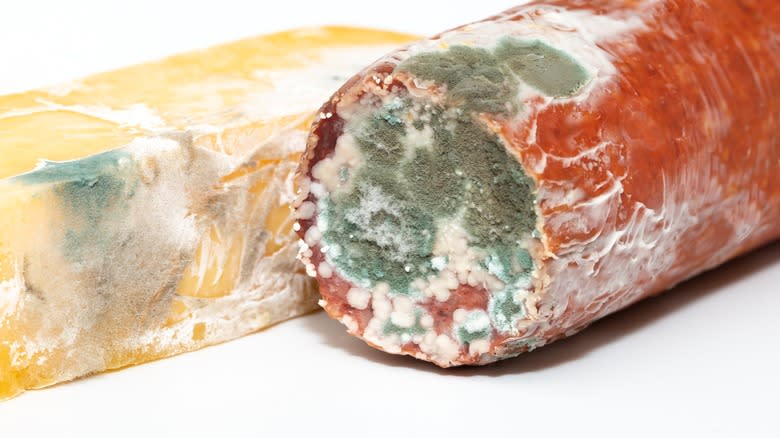
In a perfect world, checking the sell-by or expiration date on a package of sausage would be sufficient to find out whether or not the sausage has gone bad. Unfortunately, we don't live in that kind of world, so we have to look a bit closer when we are picking out our meat.
While the dates on the package are obviously helpful in knowing how old the sausage is, you should also take a look at the color and overall appearance of the meat. If fresh sausage is pinkish (in the case of pork sausage), red (in the case of beef sausage), or a light peachy color (in the case of turkey or chicken sausage), it is still good. If it's gray or brown, put it down.
If the sausage is pinkish or red with just a few brown spots on it, it might still be okay to eat if you do it soon, but this usually means that it is older and is past its prime. If those spots are green (which we hope you won't see at the store), that means mold, so leave that one alone.
Not Keeping Your Recipe In Mind

Sausage is sausage, right? Not even close! While we have mentioned the difference between fresh sausage and smoked sausage, that is just the tip of this meaty iceberg. There is a myriad of different types of sausage and they are all good for different recipes. Using the wrong one could lead to an underwhelming dish that doesn't taste like it should.
Bratwurst, for instance, is a pork-based variation that cooks up well with some butter, onions, and maybe even a bit of beer. Using kelbasa, on the other hand, goes great on the grill, in a meaty stew, or on a charcuterie board. Using andouille is good for Cajun dishes like jambalaya and gumbo, while chorizo is a spicy addition to traditional Mexican fare. Then you have salami, which can join Kielbasa on the charcuterie board or be cooked in Italian baked pasta dishes... and the list just goes on and on.
So, if you want your recipe to turn out as planned, make sure to choose the specific kind of sausage it calls for. And if you are making up your own recipe, we highly recommend doing some research on the different types of sausage available so that you can decide which one will work (and taste) the best.
Thinking Uncured Sausage Is Better For You
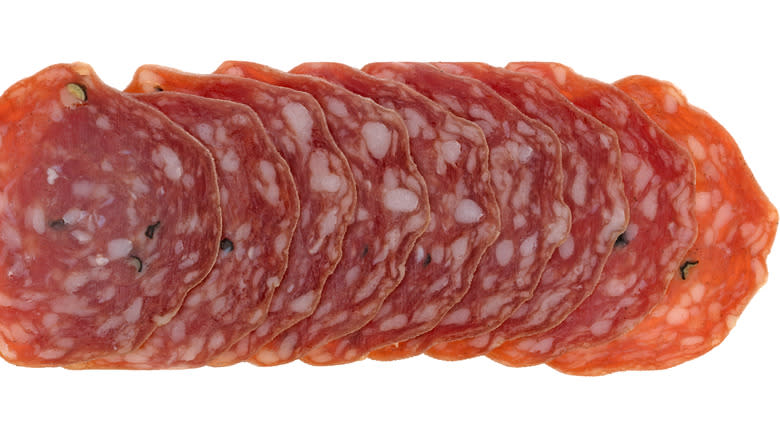
Cured meats like sausage and bacon are a great example of something you love, but that doesn't love you back. There have been many studies that link high consumption of cured meats with colorectal cancer, so it is no surprise that people want to find a way to make sausage healthier so they can continue to enjoy it without worrying about the consequences.
Unfortunately, however, the main way they go about this is to seek out sausage that is labeled "uncured." Curing is a preservation process during which things like salt, sugar, nitrite, or nitrate are added to meat to extend its shelf life and stave off spoilage. While salt and sugar are usually viewed as more "natural," nitrites and nitrates are usually added during a chemical process. They help kill bacteria that may be in the meat and bring their own flavor. But, many people think that they are also responsible for sausage's bad reputation.
To avoid this, they go for sausage that is labeled as "uncured." What they don't realize, however, is that most uncured sausages are actually still cured... just with vegetable compounds instead of chemical ones. This means that the person eating them is not actually avoiding the nitrites, they are just eating a different kind. Some types of sausage may genuinely be uncured (you can tell by their dull, gray, unappealing appearance), but you have to look closely at the label to find out which one.
Not Trying Poultry Sausage
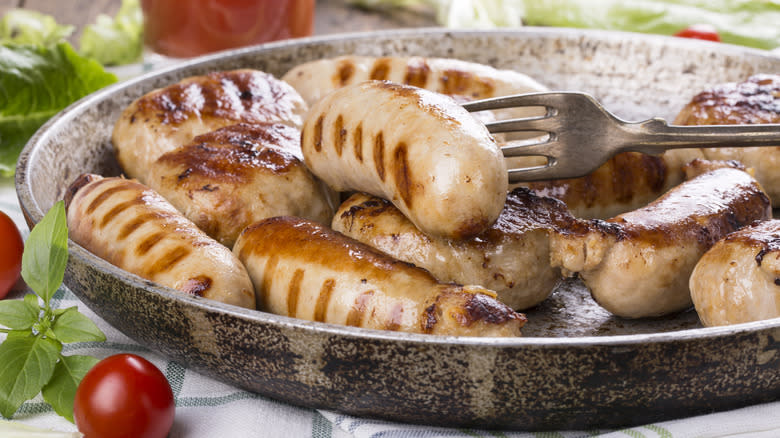
Going for uncured sausage instead of the cured kind may not really be as healthy as you would expect, but there is one proven way to make your sausage dishes healthier: poultry sausage. While most "mainstream" sausage is made of pork, beef, or a combination of the two, there are also sausages that are made of chicken or turkey. While these are not on everyone's radar, they are actually a delicious substitution for "regular" sausage that can satisfy your craving while being a lot friendlier to the body.
Chicken and turkey sausage contain around 140-160 calories per serving size (usually one link). Pork sausage can have between 290 and 455 calories – more than twice that amount. Poultry sausage also has half the fat, with seven to 10 grams per sausage link versus 23-38 grams. It has much less sodium as well, with just 670 mg per serving as opposed to pork sausage's whopping 846-1235 milligrams.
So, if you are looking for a sausage that is a bit more diet-friendly, or just looking to try something new, consider swapping out the pork or beef sausage in your recipes with poultry sausage. You may be surprised to find that you like this lighter version even more!
Not Checking The Meat Percentage In Your Sausage
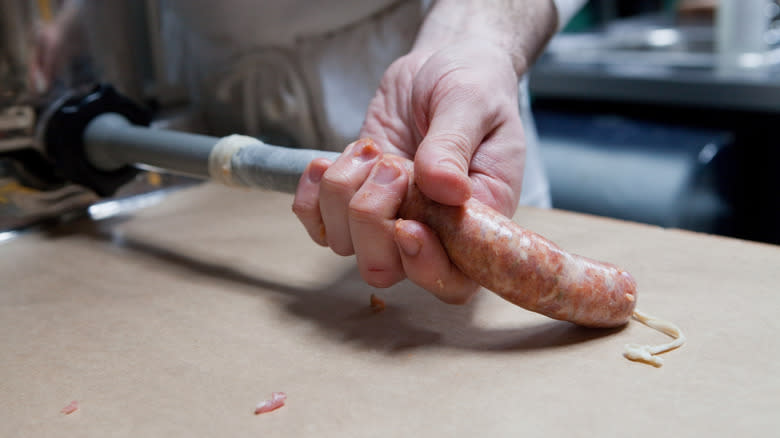
We all think of sausage as a meat product, but it is almost never comprised entirely of meat. In England, for instance, where sausage (or "bangers," if you're feeling British) is basically the national food, pork sausage only has to legally contain 65 percent meat. Beef sausage can contain even less. This means that the rest of the sausage can be filled up with things like fat, gristle, rind, sinew, soya (soybeans), milk protein (remember the allergens section?), skin, and water. Lots of water. Manufacturers can even add phosphates to make the sausage hold even more water before tossing in lots of other substances to keep the meat from spoiling or turning brown. There are also herbs and spices in there, but these may actually contribute to the taste of the sausage, so we won't judge those as harshly.
While it is normally the cheaper brands that stuff their sausage full of extras, it can happen with any kind of sausage. But how can you avoid buying meat that is barely even meat at all? The key is to look for sausage that contains at least 75 percent meat. It should say this on the package under the ingredients heading. If your sausage contains less meat than that, it could reduce in size when you cook it and it releases the water, or it may have a taste, texture, or overall quality that is subpar.
Forgetting To Check The Spice Level
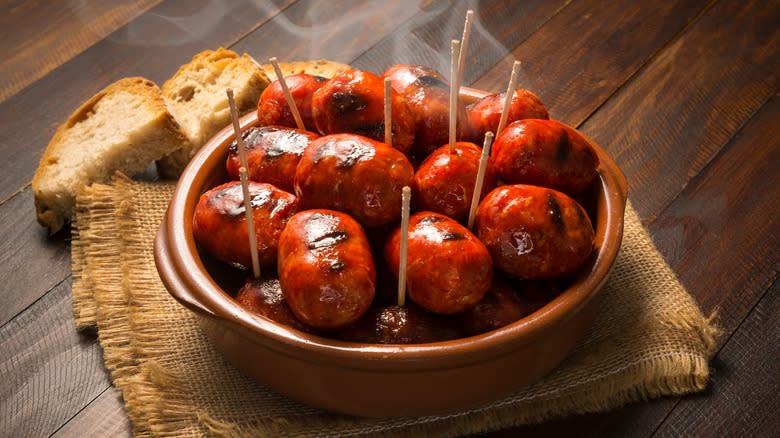
Some like it hot, but some do not. Sausage is usually a bit of a spicy meat thanks to its being cured as well as the herbs and spices that go into it, but it doesn't always burn when you eat it. Sometimes, though, it really, really does. Chorizo, for example, is a Spanish/Mexican sausage with a big kick. The Mexican version contains chile peppers and vinegar, while the Spanish version contains garlic and smoked paprika, which can also be very spicy.
If you prefer your sausage to be milder and less likely to have you reaching for a glass of milk, you may want to go for sausages like sweet Italian sausage, which is more neutral on the heat front. While some spicy sausages are easy to spot because of their bright, unnaturally orangish-red color, some may look just like regular sausages. If you are sensitive to spiciness or are just looking to avoid it, be sure to check the label thoroughly and make sure you are getting one of the milder meats to save yourself some sweating later.
Buying Sausage That Wasn't Stored Properly
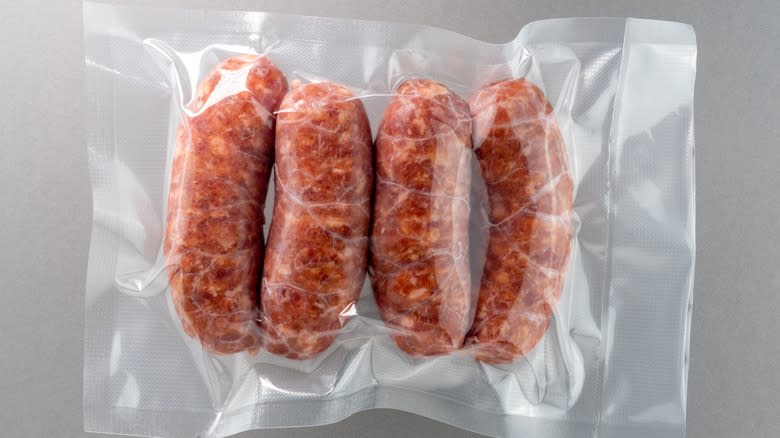
It is one thing to store your sausage properly at home, but at the store, you have no control over how the meat is kept. Both fresh and smoked sausage should be kept in the refrigerated section, so, obviously, if you find a package of sausage lying on a shelf in some other room temperature section of the store, you should just leave it alone (or give it to an employee so they can dispose of it if you want to be a good citizen).
But what happens if the store's refrigerator is not refrigerating properly? Grocery stores and butcher shops are as prone to electrical outages as any other structure, so you can't always assume that everything is always working properly. According to the FDA, all sausage (excluding dry sausage) needs to be refrigerated because it is perishable. No exceptions. If you pick up a package of sausage from the refrigerator or freezer at the store and it feels warm to the touch, put it back. If it has not changed color yet, there is no way to know how long it has been exposed to higher temperatures, so it is not safe to cook it. If it has changed color, this is a good indication that something is off and you shouldn't buy it in that case either.
Read the original article on Daily Meal.

